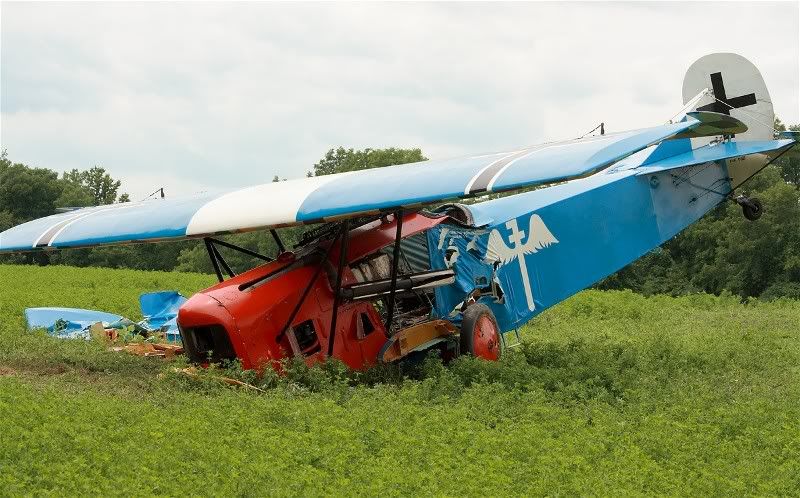WF2 has far more expertise than I but I'm also a pilot and I'm nearing the completion of my Hatz biplane so I can offer a few thoughts. The stall speed (speed at which the wings stop flying) of most biplanes is quite low (for my Hatz it's 40-45 mph versus 57 mph for my monoplane Piper). This means that you can contact the ground under control at a fairly low speed- which is good for survivability. The problem with losing power in your biplane is that the glide ratio (distance you can glide forward versus the downward rate) is pretty bad because of all of the aerodynamic drag, not only the two complete wings but surprisingly the landing and flying wires that hold it all together, not to mention the fixed landing gear. This means that when you lose power, your landing site options are very much reduced. A flight instructor once told me that you pretty much look down and choose your spot because that's where you'll be landing. In comparison, a modern monoplane like a Piper or Cessna, while having a higher stall speed (bad) will have a much better glide ratio (I thin 7:1 is typical) so you'll have more options to pick your landing site. If you're at 5000 feet in your Cessna, you've got a radius of 7 miles to find a good field. Of course, if you lose power on takeoff, no configuration helps.
Every two years, we pilots have to undergo what is the equivalent of a driver's test and the part that I always dread is when the examiner pulls back the throttle looks at me and leers "Now what are you gonna do". I invariably 1) panic 2) pick a bad spot 3) scare the heck out of the examiner. in my determination to do complete an impossible landing approach. I guess the silver lining is that they always pass me, probably to avoid a return check ride.




